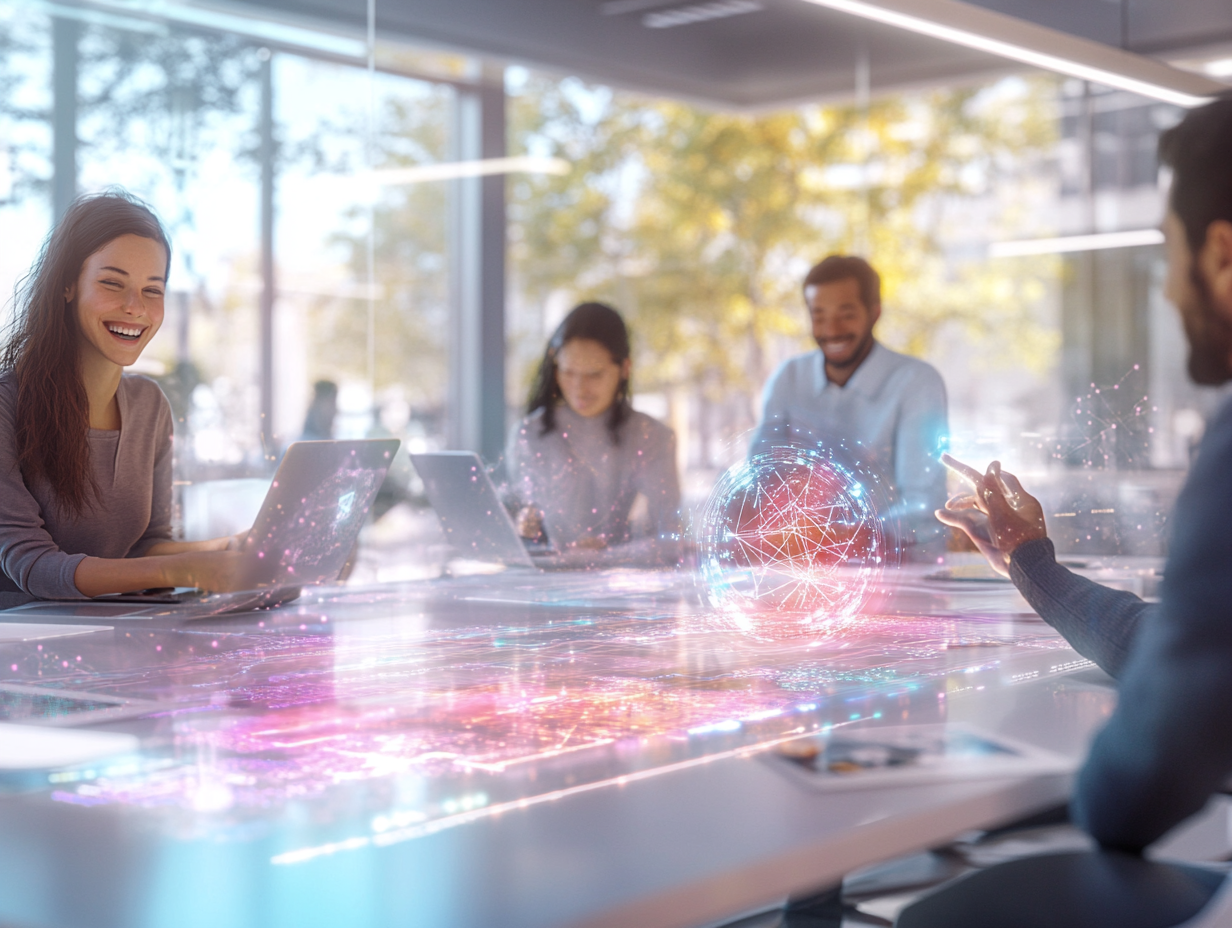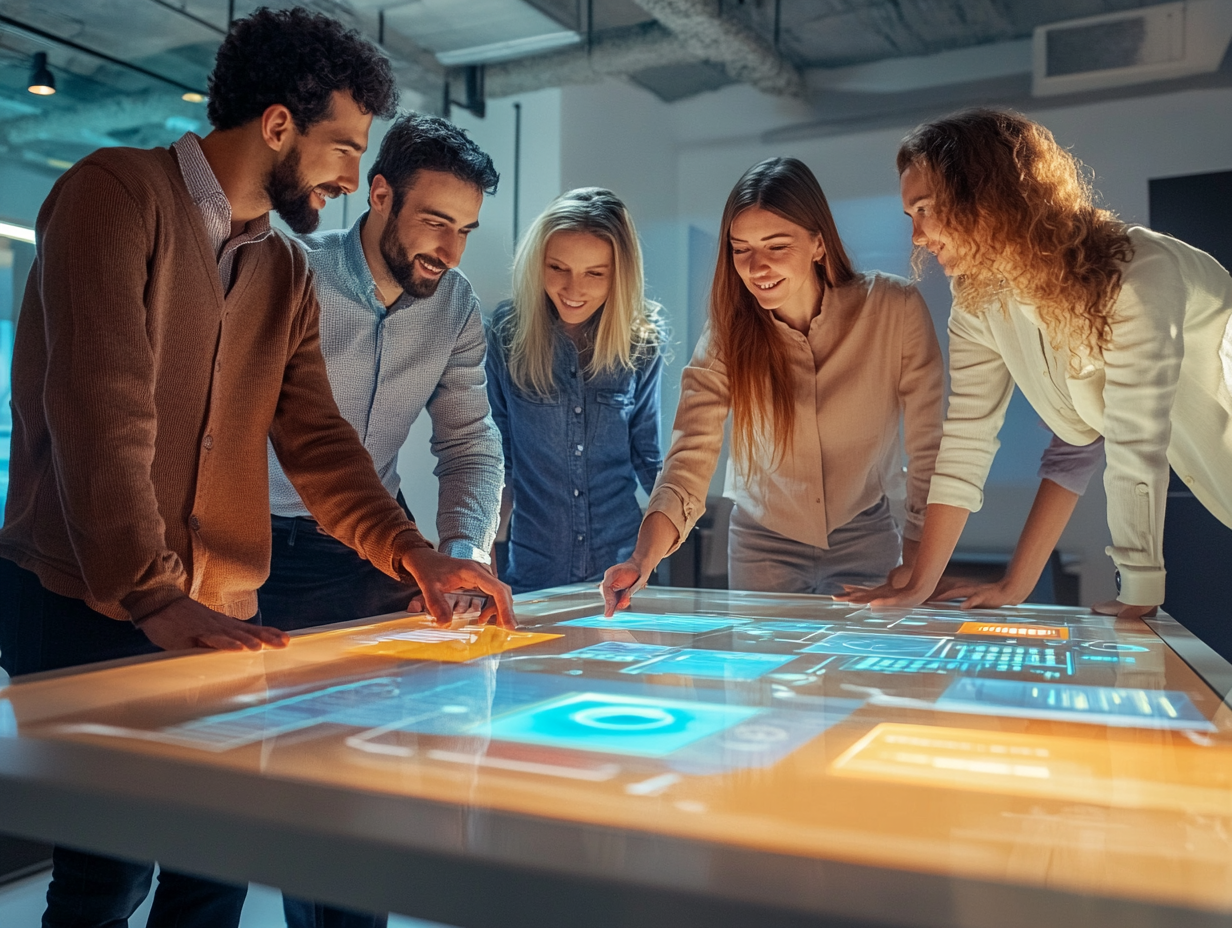Superwork Research
(Taejae Future Consensus Institute)
2025년 4월 5일
How is AI transforming the nature of work, and what does the future of human-AI collaboration look like?
The Taejae Digital Transformation and Social Changes team investigates how AI is revolutionizing work—creating a new paradigm where human potential is amplified through AI collaboration, redefining value creation and the very essence of work itself.
The Superwork Research Initiative
The Superwork Research Initiative at the Taejae Future Consensus Institute examines how artificial intelligence is transforming work across industries, occupations, and societies. Our research focuses on understanding both the challenges and opportunities presented by AI in the workplace, with a particular emphasis on how humans and AI can collaborate effectively to create new forms of value.
Key Research Questions
- Cognitive Transformation: How is AI reshaping human thinking processes?
- How does AI transform knowledge creation and synthesis?
- How are decision-making capabilities enhanced by AI?
- How does AI change our perception of meaning and value in work?
- Organizational Transformation: How are organizational structures evolving with AI?
- How are workflows being optimized through AI integration?
- How are management approaches evolving in response to AI?
- What new governance frameworks are emerging for AI-human collaboration?
- Social Transformation: How are workplace relationships changing through AI integration?
- How are time allocation patterns shifting in AI-augmented workplaces?
- How are communication methods being transformed by AI tools?
- What new collaborative practices are emerging between humans and AI?
So, what's the bottleneck of the modern workflow?
Modern knowledge work faces significant bottlenecks. The sheer volume of information generated daily overwhelms our capacity to read, process, and synthesize it effectively. Traditional methods of reading are too slow (average 200-400 WPM) and cognitively demanding to keep pace.
Similarly, crafting well-structured documents, reports, or presentations (writing) is time-consuming and often struggles to capture the full complexity of insights or adapt quickly to different audiences.
This fundamental mismatch between information scale and human processing speed creates a critical bottleneck, hindering timely decision-making and innovation. Superwork, leveraging AI, aims to break this bottleneck by automating information synthesis and augmenting knowledge creation, freeing humans to focus on higher-level strategic thinking and wisdom application.
How We Understand the Worldand how AI changes it
The DIKW (Data, Information, Knowledge, Wisdom) framework provides a powerful lens for understanding how AI is transforming work. By comparing the DIKW process before and after the integration of AI, we can see how the relationship between humans and technology has fundamentally shifted in the superwork paradigm.1
Modern Work (Before AI)
In modern work environments before AI, data collection was already automated through various technologies, and information was increasingly accessed through internet searches. However, knowledge was still primarily developed through human expertise and experience, and wisdom was applied through human decision-making processes.
Superwork (After AI)
In the superwork paradigm, AI systems handle data collection and processing at scale, generate information through advanced analytics, and produce knowledge through machine learning. Humans collaborate with AI at the wisdom level, leveraging AI recommendations while applying human values, ethics, and contextual understanding to make final decisions.
Key Transformations in Understanding
How We Communicate the Worldand how AI changes it
The MCR (Message-Channel-Receiver) framework2 describes how knowledge is effectively communicated. In the era of AI, the MCR framework has shifted from being primarily human-driven to becoming predominantly technology-driven, transforming how we create and deliver messages.
Modern Work (Before AI)
In traditional work environments, the MCR framework was primarily human-driven, with people handling message creation, channel selection, and audience understanding, while technology played a supporting role with templates and basic tools.
Superwork (After AI)
The MCR framework has evolved to a technology-driven system where AI manages message creation, channel optimization, and receiver analysis, enabling more efficient and effective communication at scale.
Key Transformations in Communication
AI-Augmented Daily Work Structure
The Taejae Future Consensus Institute Digital Transformation Team has implemented an innovative 3-day (Monday, Wednesday, Friday) superwork system. Our efficient meeting structure and AI-augmented workflow have dramatically increased our productivity while reducing work hours. Below is the daily schedule that enables this high productivity.
Why More Meeting Time and Less Private Work Time?
In the AI era, the value distribution of work time has fundamentally shifted. Private work time is now primarily spent prompting AI systems, while collaborative discussion time among humans has become the most valuable component of the workday.
Traditional Work
(High Value Creation)
AI-Augmented Work
(High Value Creation)
Why This Shift Matters:
🤖 AI Handles Individual Tasks
Tasks that previously required deep individual focus (research, writing, analysis) can now be delegated to AI through effective prompting, making private work time more efficient but less distinctive in value creation.
👥 Human Collective Intelligence
The unique value humans bring is increasingly in collaborative meaning-making, value judgments, and creative synthesis that emerges through high-quality discussion.
🧠 Socially Distributed Cognition
Research in cognitive science (Hutchins, 1995) shows that complex problem-solving is often distributed across social groups rather than residing in individual minds. AI amplifies this effect by handling individual cognitive loads.
💡 Knowledge Integration
The most valuable insights emerge at the intersection of multiple perspectives, which requires deliberate collaborative time rather than isolated work.
Morning Collective Intelligence Session
- Check-in: Sharing insights and ideas by team member
- Team wisdom derivation discussion using Claude Projects
- Collective intelligence activation centered on key questions
- AI supports discussion by reinforcing relevant knowledge in real-time
Lunch and Relaxed Sync Time
- Lunch
- Free conversation and informal idea exchange
- AI develops and transforms morning session content into knowledge during this time
Individual AI Collaboration Time
- Exploration of various information sources and integration into NotebookLM
- Information→Knowledge transformation work using NotebookLM
- Knowledge→Wisdom development process using Claude Projects
- Deepening individual interest areas and preparing contributions to team projects
Wrap-up Meeting
- Sharing discoveries from individual AI collaboration time
- Integration of results from NotebookLM and Claude Projects
- Team-level integration and next steps planning
- Instructing AI on follow-up tasks and preparation for next meeting
© 2025 Taejae Future Consensus Institute. All rights reserved.


